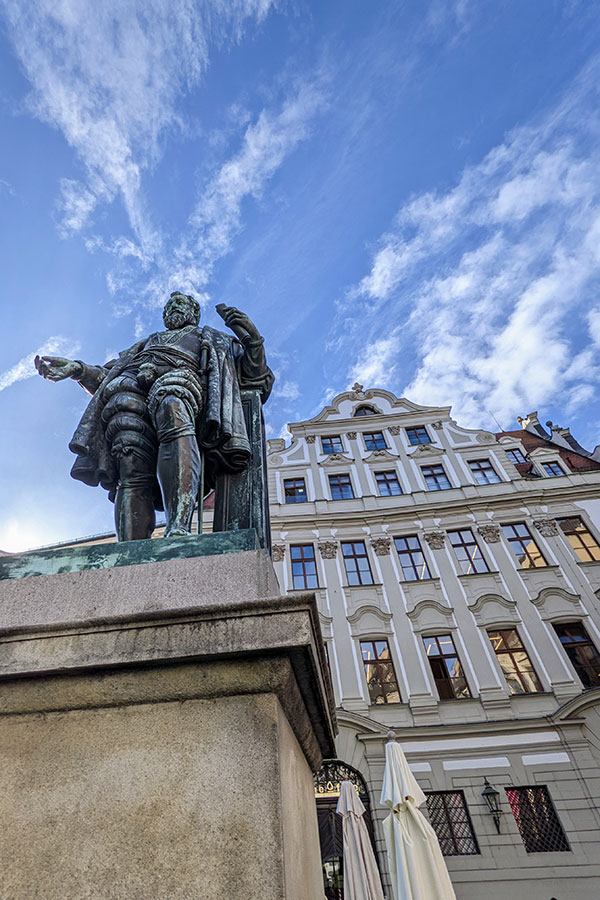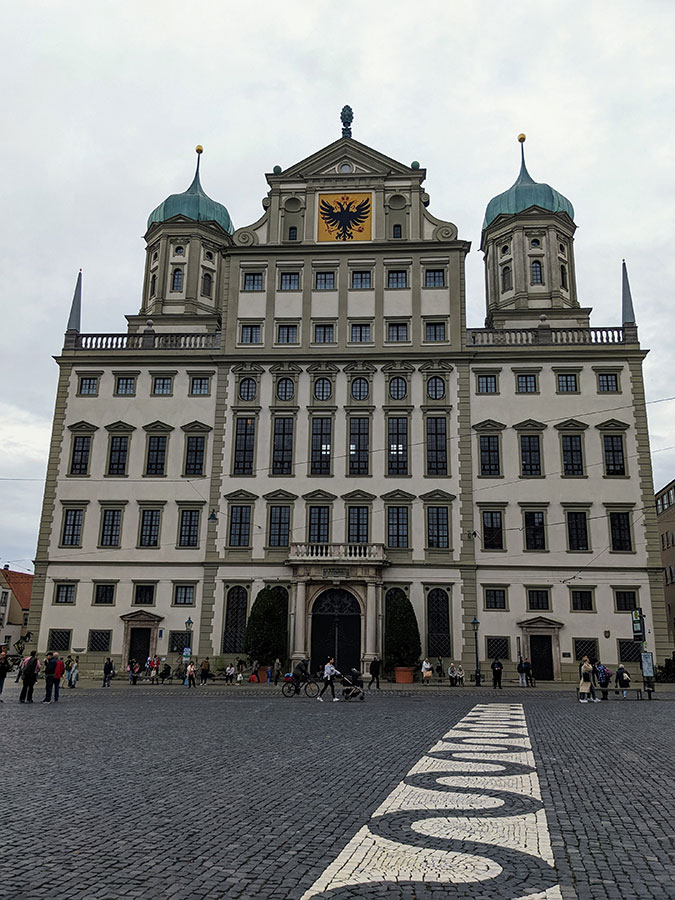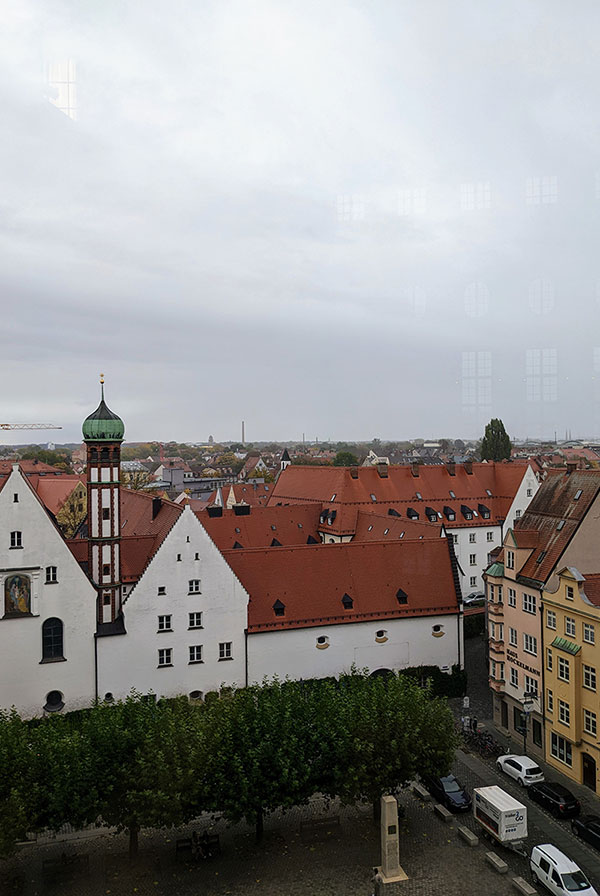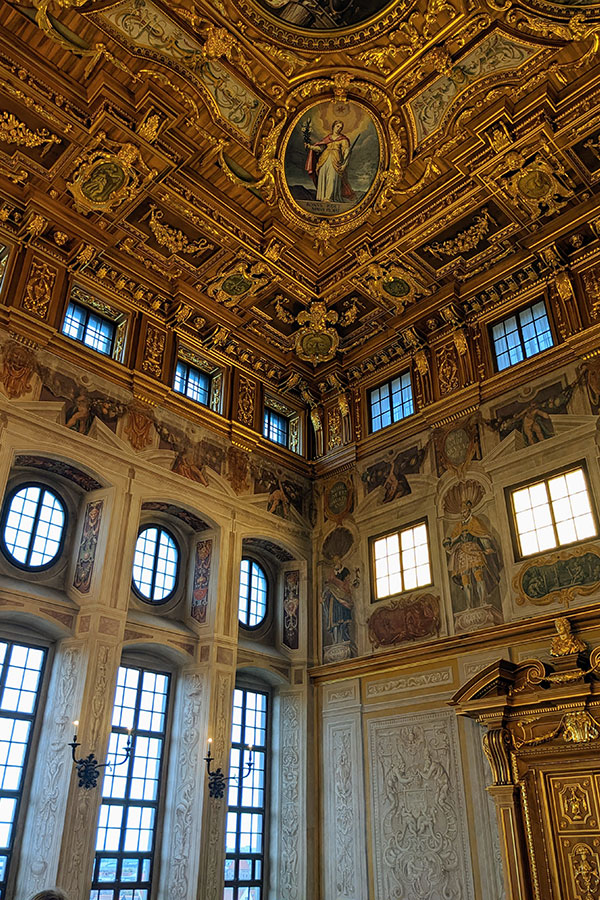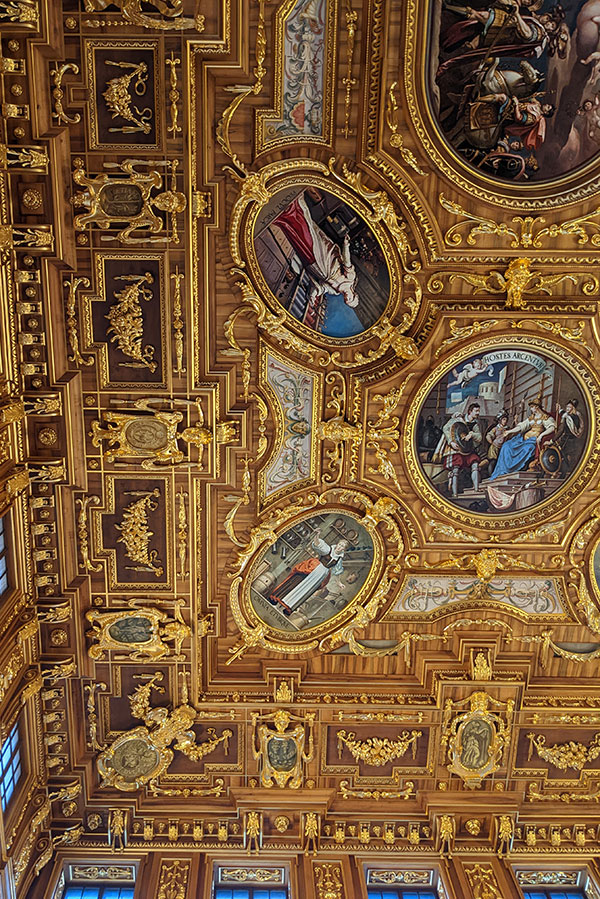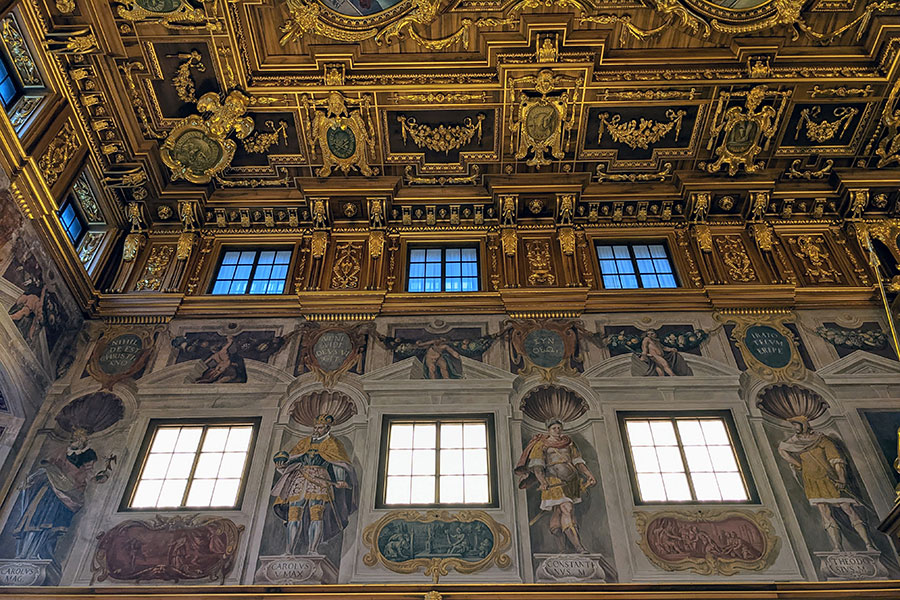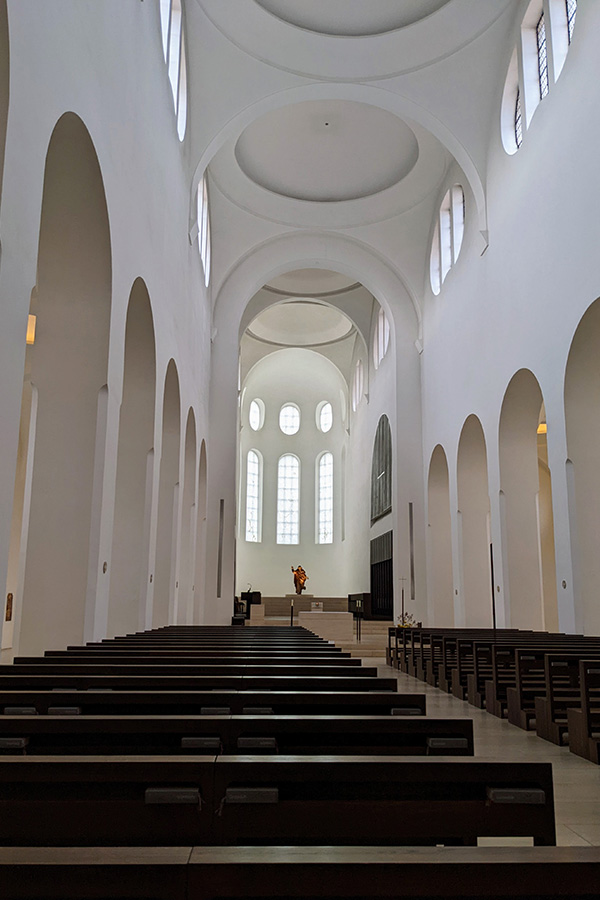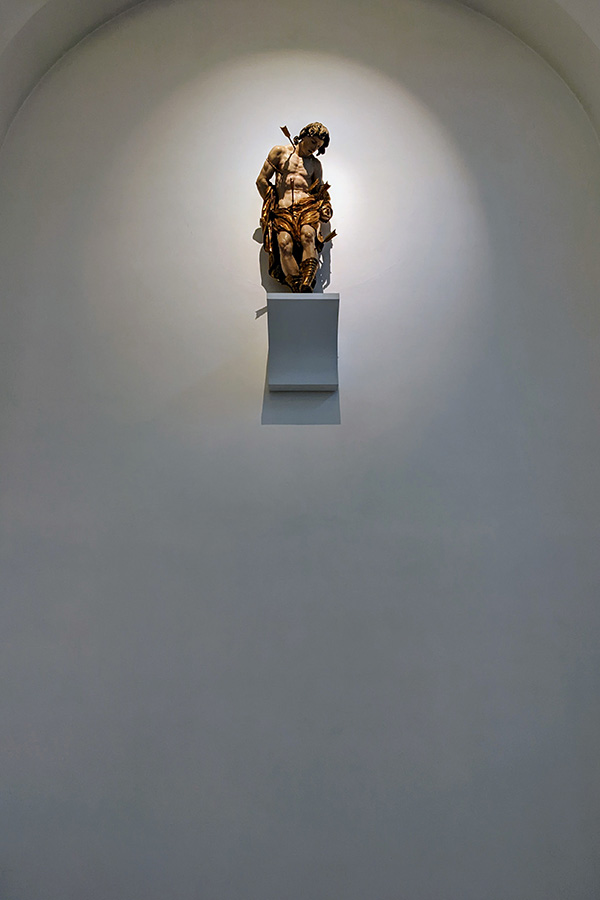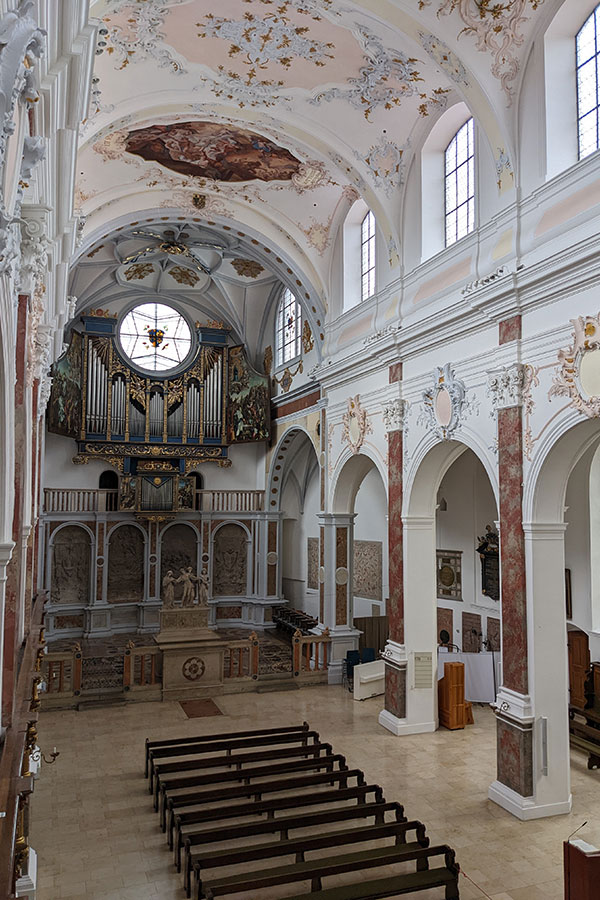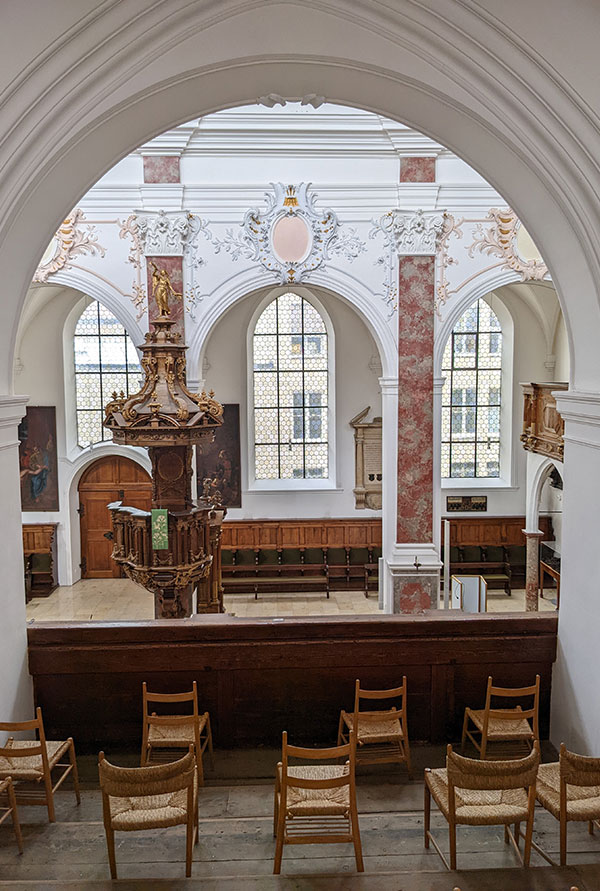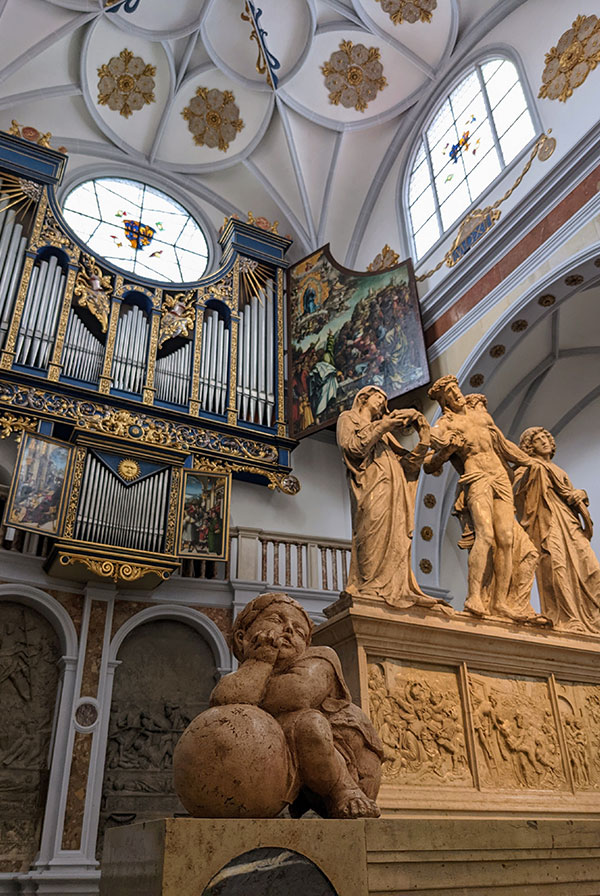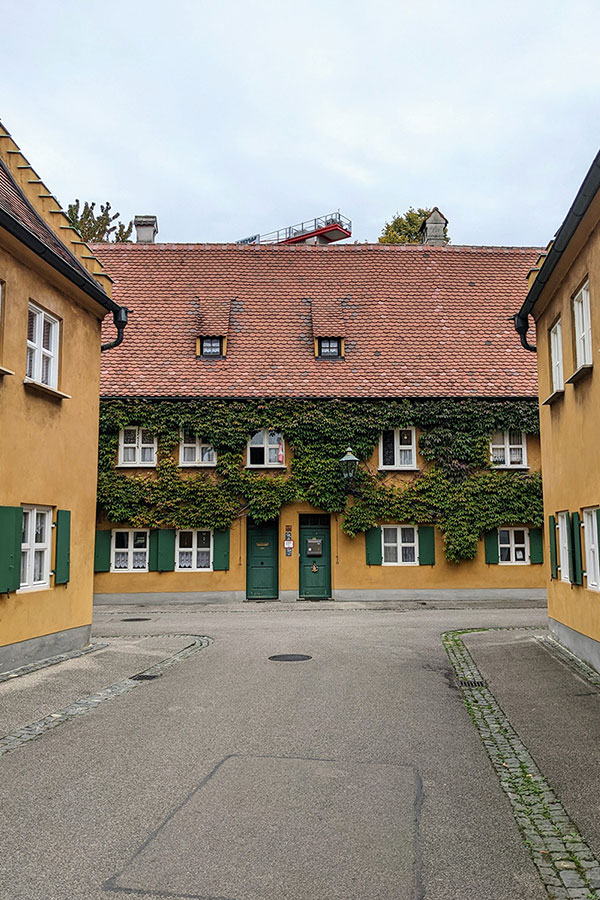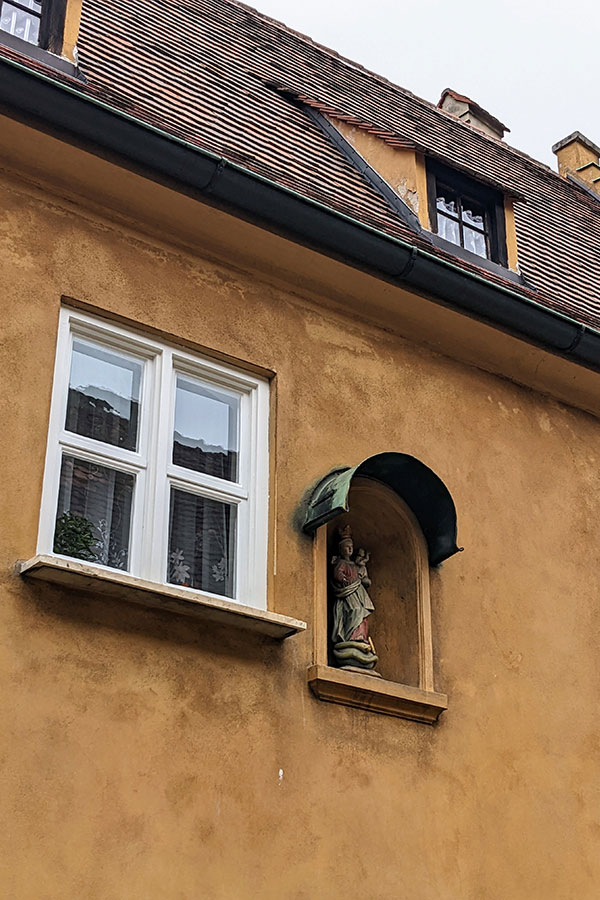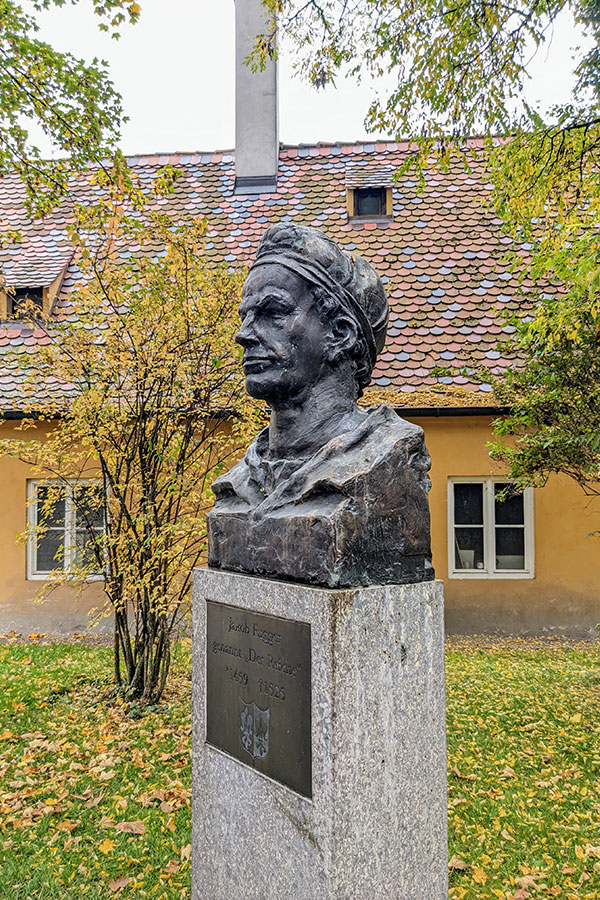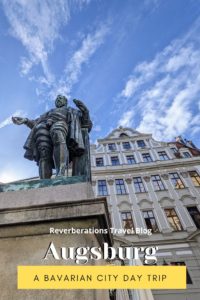Nestled in Germany’s southern Swabian region, Augsburg is conveniently located between Munich and Stuttgart. These two nearby cities can cast a shadow that is hard to avoid. But the third largest city in Bavaria and also the federal state’s oldest, Augsburg just the right size for a day trip (or two) where you can get a good feel for the city and immerse yourself in its history. Founded by the Romans, this historically wealthy city offers a lot to explore, and should not be missed!
Brief History of Augsburg
Augsburg has deep roots. And I mean deep! The city was founded in 15 BC by the Romans and named in honor of Emperor Augustus. The location was a strategic one as it is where the rivers Lech and Wertach come together.
Over the centuries, control of the city varied. But by the 13th century, it was given Free Imperial City status by the Holy Roman Empire. This meant the city had a greater degree of autonomy than the empire’s typical cities of the time. The powerful city-state status, combined with its geographic location, meant that Augsburg was an important stop on trade routes.
With all of that trade flowing through the city, there was plenty of wealth. One of the most prominent families to emerge during the 15th and 16th centuries was the Fuggers. And the family’s impact on the city continues to be seen today, with the Fuggerei, the world’s oldest public housing complex – which is still in use today!
Wealth leads to growth. And by the 16th century, Augsburg was the largest city in Germany. It was an attractive location for artists, sculptors, and musicians as well as craftspeople and artisans, especially goldsmithies. One of those musicians born and raised in the city was composer Leopold Mozart, the father of Wolfgang Amadeus.
After briefly being occupied by the Swedes, Augsburg finally became a part of what was then the Kingdom of Bavaria in the early 1800s.
Things to Do in Augsburg
Rathausplatz, in the heart of Augsburg, is a good starting spot for visiting the city. In addition to being home to the city’s tourist center, the square offers a chance to take in the surrounding buildings and features.
For example, at the northern corner of the square, you can find the Augustusbrunnen, a lavish renaissance fountain from the 1500s. Just across the street from the fountain is the Perlach Tower (Perlachturm), a 10th-century bell tower attached to St. Peter am Perlach church. The tower cuts a striking figure on the square with its clock faces jutting into the air.
The Roman Foundations of Augsburg
The citizens of Augsburg have built upon their Roman foundations. This is meant literally in some cases. Building foundations and items continue to be found during new construction and excavations. To get the best overview and learn about the city’s Roman history, head to the Roman Museum (Römisches Museum). The museum is a permanent exhibition in the Zeughaus, the city’s remarkable 16th-century building with a striking facade including a large bronze sculpture (“War in Heaven” by Hans Reichle) that served as an arsenal.
Augsburg Architecture
The Zeughaus is a great example of why Augsburg is worth exploring on foot. Throughout the city, building facades hint at the city’s past. There are lavish Baroque and Renaissance buildings. There are buildings with colorful artistic decorations. Consider taking one of the guided tours offered by the city.
Back at the Rathausplatz, just to the side of the Perlach Tower, sits the city’s town hall. The exterior of the building is full of pomp, bookended by two large towers with shapely domes. In any other city, this 16th-century building would be the feature attraction. But in this case, the building’s Golden Hall takes the cake.
With 46-foot ceilings and nearly 6000 square feet, the Golden Hall delivers on the promise of the name and then some. Completed nearly two decades after the rest of the building, the hall was badly damaged during World War II. Luckily, it has been restored — the project started in 1980 and was not completed in 1996. Art covers the ceiling and the walls of the room creating a lavish hall that is larger than life.
Augsburg Churches
In 1555 in Augsburg, the Holy Roman Emperor Charles V signed the Peace of Augsburg. The treaty was meant to end the religious battle between Catholicism and Lutheranism. It allowed each state of the Holy Roman Empire to make a choice to be either Catholic or Lutheran. The thinking was that if citizens of the state wished to practice a different Christian faith, they could relocate to a state that matched their beliefs.
St. Anna was built in 1321 as part of a monastery by Carmelite friars. Just over two hundred years later, in 1525, it converted to Lutheranism. The medieval church features a Fugger chapel that serves as the family’s burial chapel.
Walking through the church, especially the perimeter where countless graves are marked in the walls, you are struck by just how much history the building holds. And given the Fugger connection, it is no surprise that as far as religious art goes, the church wows with a remarkable organ, stained glass, and a goldsmith’s chapel.
In the early 1500s, prior to converting to Lutheranism, the church hosted Martin Luther. So it is no surprise that today the church also houses a small museum about the life and works of Luther.
St. Moritz is a striking contrast to St. Anna. The Catholic church features a stark white modernist chapel. The original church was destroyed during World War II. The current church is the result of a rebuild immediately following the end of the war. Although the church features a minimalist style, the architecture flows with rounded arches and circular ceiling details.
Just north of the downtown area, the Augsburger Dom marries the original 11th-century building with 14th-century Gothic renovations. The church uses the remains of a 10th-century church and Roman walls for the foundations at the front of the building.
Musical Roots of Mozart
At the Leopold Mozart House (Leopold-Mozart-Haus), visitors can walk through the childhood home of Wolfgang’s father. The museum explores what shaped this notable musical family and the struggles they faced. The younger Mozart is considered a genius but he came by his talents honestly; Leopold was a noted composer whose violin textbook continues to be used to this day.
The museum is small but very modern, with friendly and knowledgeable staff as well as fun hands-on exhibits that embrace technology. You can pick up a violin and play a few notes, sit in a carriage to experience just how uncomfortable the ride is, or even walk on stage to applause. The museum’s last room is an isolated, darkened room where you can hear Mozart’s compositions without distractions. Bright, colored lights are synchronized to the music, offering a unique experience.
The Groundbreaking Fuggerei
The Fugger family has left their mark all over the city of Augsburg. But their namesake Fuggerei is not indulgent like a lavish monument or building. In 1521, Jakob Fugger established the Fuggerei, the world’s oldest social housing project.
At the time, any Catholic Augsburg citizen could apply for a home in the complex in exchange for “three prayers a day” and an annual rent of a gulden. When Fugger died in 1525, 52 homes had been constructed. The project still continues. Today, there are 140 apartments in 67 homes in the walled complex. The annual rent is a mere 88 Euro cents.
The pale yellow buildings with green shutters are charming. Some are covered in ivy or have gardens tended to by residents. Each home has its own unique bell pull. The story goes that each bellpull is different so that residents coming home late could identify their home on the unilluminated streets centuries ago.
In order to supplement the rents that are collected and keep the Fuggerei running, visitors must pay an admission fee to see inside the complex, eat at the restaurant, or take a tour. There are also several museums where you can get a feel for life at the Fuggerei centuries ago and today.
Walking around the streets of the Fuggerei is impactful and memorable. But knowing you are walking through someone’s neighborhood, it can feel a bit uncomfortable at times. At the end of your visit, you come away with a deep respect not only for the project but the people who live there. And the Fuggerei is not shy about its residents: they are celebrated throughout the museums and tours.
Where to Eat in Augsburg
The Augsburg City Market (Augsburger Stadtmarkt) has more to offer than just food. Just a few blocks from Rathausplatz, the main square, the marketplace has nearly 100 vendors selling everything from local to international specialties. It is just the place to stop if you are looking for fresh produce or flowers. For a quick cup of tea or coffee (or beer) try the VinCafé, which has a large outdoor seating area.
For lunch or dinner, consider the Ratskeller. Located beneath city hall, the Ratskeller serves traditional but still modern local food. The restaurant’s vaulted ceilings of brick and stone are restored to perfection!
Looking for something a little sweet? At Kaffeehaus Dichtl, upfront you will find a pastry and chocolate shop with dozens and dozens of mouthwatering choices. Past the shop counter, is a cozy cafe with table service where you can relax with a cup of coffee or tea. The hard part is deciding on a single pastry.
Getting There & Getting Around
Getting to Augsburg is relatively easy, especially by train. With the fast ICE connection from Munich, it is only about a half-hour ride; with the local RB or RE connection, it is roughly 45 to 50 minutes. As always, when using local transit, consider a regional train pass like the Bayern Ticket.
If you are planning to drive to the city, the city is accessible via the A8 there are parking garages around the city to use.
Once you get to the city, getting around is relatively easy. Augsburg’s center is fairly compact and easily walkable although parts of the city can be a bit hilly. If you want to get off your feet for a bit, local transit options include trams, buses, and the S-Bahn.
Save this post for later with Pinterest!
All photos, as well as opinions, are my own.
